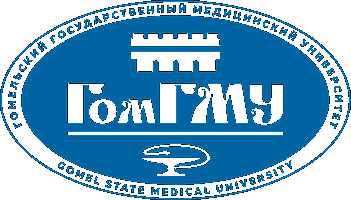| dc.contributor.author | Бондаренко, К. К. | |
| dc.contributor.author | Новик, Г. В. | |
| dc.contributor.author | Бондаренко, А. Е. | |
| dc.date.accessioned | 2020-11-20T07:02:37Z | |
| dc.date.available | 2020-11-20T07:02:37Z | |
| dc.date.issued | 2020 | |
| dc.identifier.citation | Бондаренко, К. К. Влияние биомеханических параметров движения на посадку хоккеиста / К. К. Бондаренко, Г. В. Новик, А. Е. Бондаренко // Проблемы здоровья и экологии. – 2020. – № 3 (65). – С. 90-94. | ru_RU |
| dc.identifier.uri | https://elib.gsmu.by/handle/GomSMU/7275 | |
| dc.description.abstract | Цель исследования: оценить влияние сгибания и разгибания звеньев тела при перемещении в посадке хоккеиста на положение суставов относительно общего центра масс тела.
Материал и методы. В исследовании приняла участие группа из 14 высококвалифицированных хоккеистов, выполнявших перемещение в беге на коньках и проприоцептивное перемещение на тензоплатформу в посадку хоккеиста. Проведен биомеханический анализ движений методами видеоанализа, тензодинамометрии и миографии.
Результаты. Выявлены наиболее оптимальные диапазоны суставных углов коленного и тазобедренного суставов в посадке хоккеиста. В частности, при фиксации углового положения коленного сустава в диапазоне 80–90 градусов отмечено снижение величины силы мышечной тяги четырёхглавой мышцы бедра на переднюю крестообразную связку. Величина данного снижения варьировала в диапазоне 17–22 % от средних величин показателя, полученных при угловом положении коленного сустава менее 80 или более 90 градусов. Сгибание в тазобедренном суставе в диапазоне 42–55 градусов при оптимальном положении коленного сустава способствовало увеличению равновесия в заданной позе.
Заключение. Сгибание и разгибание туловища приводят к изменению положения суставов, связанных с общим центром масс тела (ОЦМт) и последующей биомеханикой посадки. Отклонение угловых положений от оптимальных диапазонов влияет на траекторию перемещения ОЦМт с вертикальными колебаниями, что, в свою очередь, негативно сказывается на скорости перемещения и устойчивости посадки хоккеиста. Выход за границы зоны постурального положения может приводить к более жесткой посадочной позе, что увеличивает риск травмирования передней крестообразной связки. | ru_RU |
| dc.description.abstract | Objective: to evaluate the effect of flexion and extension of the body units during ice-hockey players` movements in the sitting position on the location of the joints in relation to the general center of body mass. Material and methods. A group of 14 highly qualified ice-hockey players who performed running movements on skates and proprioceptive movements onto the strain platform in the ice-hockey player`s sitting position. The biomechanical analysis of the movements was conducted with the use of the methods of video analysis, strain gauge, and myometrial method. Results. The most optimal ranges of the articular angles of the knee and hip joints in the in the ice-hockey player`s sitting position have been identified. In particular, in the fixation of the angular position of the knee joint within the range of 80–90 degrees, there was a decrease in the strength of the muscle pull of the quadriceps femoris on the anterior cruciate ligament. The value of this decrease varied within the range of 17–22 % of the average values of the indicator that were obtained when the angular position of the knee joint was less than 80 or more than 90 degrees. Flexion in the hip joint over the range of 42–55 degrees with the optimal position of the knee joint contributed to increased balance in the given position.
Conclusion. Flexion and extension of the torso lead to changes in the position of the joints associated with the general center of body mass (GCMB) and subsequent biomechanics of the sitting position. The deviation of the angular positions from the optimal ranges affects the trajectory of the GCMB with vertical vibrations, which, in its turn, negatively affects the
speed of movement and stability of the ice-hockey player`s sitting position. Going beyond the boundaries of the postural position zone can lead to a more rigid sitting position, which increases the risk of injury of the anterior cruciate ligament. | |
| dc.description.abstract | | |
| dc.language.iso | ru | ru_RU |
| dc.publisher | ГомГМУ | ru_RU |
| dc.subject | посадка хоккеиста | ru_RU |
| dc.subject | биомеханика движения | ru_RU |
| dc.subject | проприоцепция положения | ru_RU |
| dc.subject | ice-hockey player`s sitting position | |
| dc.subject | biomechanics of movements | |
| dc.subject | proprioception of position | |
| dc.title | Влияние биомеханических параметров движения на посадку хоккеиста | ru_RU |
| dc.type | Article | ru_RU |
